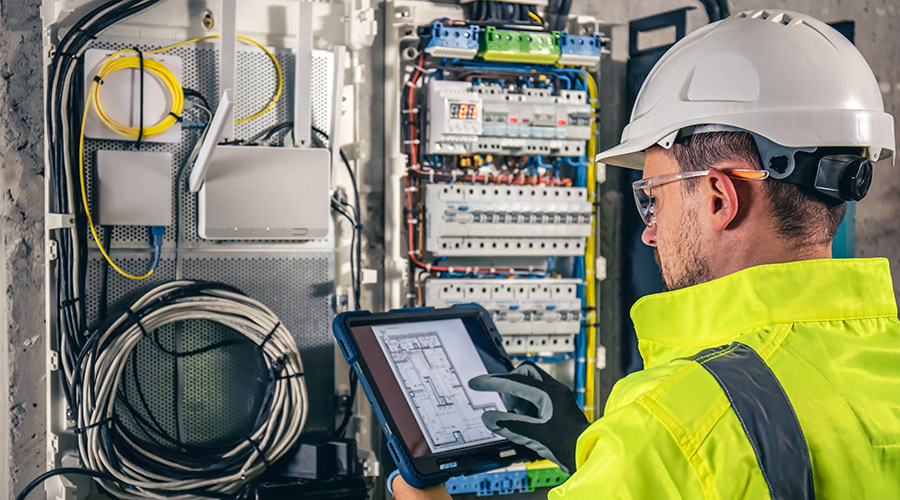How many of the clocks and screens in your hospital or clinic are synchronized to show the same, precise time? Are maintenance teams constantly spending time adjusting clocks? Are surgery teams relying on different times to track and perform procedures? Do meetings consistently start and end late?
Accurate time isn’t a mere convenience in a healthcare facility; it’s a central way of ensuring that operations are running efficiently and patient safety is paramount. It determines when a patient receives medication, when shift changes occur, when appointments begin and end, how long a patient can be in surgery, the accuracy of insurance and regulatory reporting, and more.
The benefits of synchronized time
Synchronized time happens when all of the clocks in a healthcare facility – wired, wireless, digital or analog – display the same precise time and automatically update twice a year for daylight saving time (DST) changes. When clocks are synchronized, you’re assured that your building operations are efficient and that maintenance teams are spending more time on other priorities – rather than adjusting clocks.
There are two main methods of synchronizing time
• A wired timekeeping system has a master clock that is wired to each clock in a building and controls the displayed time. Clock options for this system include energy-efficient Power over Ethernet (PoE) clocks that receive power and time updates from one cable connected to your Ethernet. No master clock, batteries or AC power is needed.
• A wireless system retrieves a time signal from GPS satellites, cell phone towers or the internet. A signal is sent to each wireless clock using a radio frequency.
Both the wired and wireless options automatically update for DST twice per year and should come with a multi-year battery life, saving your maintenance staff a huge amount of time adjusting and repairing clocks. If you wish to synchronize both wireless and wired clocks systems – or are planning a building retrofit – look for a hybrid clock system that can integrate with wireless and wired systems to maximize your investment.
Understand your needs
While some vendors offer free clock audits to help you understand and determine your best options, knowing the answers to the following questions will help you be better informed from the start:
What is your building type?
In an existing structure, power access points may be limited and extending an existing wired system can be expensive. Battery-operated Wi-Fi network clocks may be ideal: They receive a regular time sync signal from your network server to stay on time. They use staggered wake times to retrieve a time signal, thereby avoiding any slow-down of your Wi-Fi network. They come preconfigured to your Wi-Fi system, so the only installation required is hanging them on the wall.
In a new construction scenario, a wireless clock system will save you the most time and money since there is no need for cabling to each clock. Power over Ethernet (PoE) clocks are a great option if a powered Ethernet cable is available throughout the school.
What is your budget?
Whether you want a wireless system that controls your clocks and building systems, a traditional wired system or a simple way to tell time, the design phase allows you to plan your system based on your priorities. Costs can range from $20 - $200 per clock depending on your building’s size, synchronization needs and installation options.
What are your installation options?
Most clocks have a hanger bracket or keyhole for mounting. However, wired and wireless systems may require more: PoE clocks need a powered Ethernet drop close to the clock location; if your existing wired clock system has a back box, a replacement clock needs the correct hanger bracket; wired clocks require AC wiring.
For a wired and wireless clock system with a master clock, an electrician may be needed if signal circuits are used to integrate bells, intercoms or other building equipment with the clock system.
Synchronized time helps maintenance and surgery teams in Kansas
Susan B. Allen Memorial Hospital is a not-for-profit, general acute-care medical facility that serves El Dorado, Kansas and the surrounding communities. It had an analog master clock system in the surgery suite that was old and not working reliably, and had to be replaced. In addition, the hospital sought to replace the unsynchronized, battery-powered clocks in its surgery suite with ones that could synchronize to a master clock and to hospital computers.
The hospital chose PoE analog clocks for the surgery suite, as well as a digital clock for the admissions area. The PoE clocks draw both power and time updates from the hospital’s Ethernet connection, and the hospital had the flexibility to choose which server it relied on for its time signal.
Now, with synchronized time, Susan B. Allen Memorial Hospital has an easy-to-use, hands-off network. Maintenance staff no longer spends time adjusting and maintaining the clocks, and they can use the network software to review the system to make sure everything is working properly. Furthermore, surgery teams are assured that they are tracking patient conditions accurately. The hospital plans to add more synchronized clocks in the coming years.
Spend less time on time
Efficiency, accuracy and safety can all be compromised if time isn’t tracked or displayed consistently across each wing and room. As you consider a timekeeping system for your healthcare facility, knowing your technology options and the needs of your buildings will help you be better informed and ensure that your facility runs like clockwork.
Tom Foehrenbacher is the vice president of sales, American Time.

 3 Employees Injured by Patient at Halifax Infirmary's Emergency Department
3 Employees Injured by Patient at Halifax Infirmary's Emergency Department How Architects Shape the Future of Healthcare Facilities
How Architects Shape the Future of Healthcare Facilities UNC Health, Duke Health Form Partnership for Stand-alone Children's Hospital
UNC Health, Duke Health Form Partnership for Stand-alone Children's Hospital Sarasota Memorial Hospital Plans to Build New Facility in North Port
Sarasota Memorial Hospital Plans to Build New Facility in North Port CMMS, Data and the Path to Compliance
CMMS, Data and the Path to Compliance